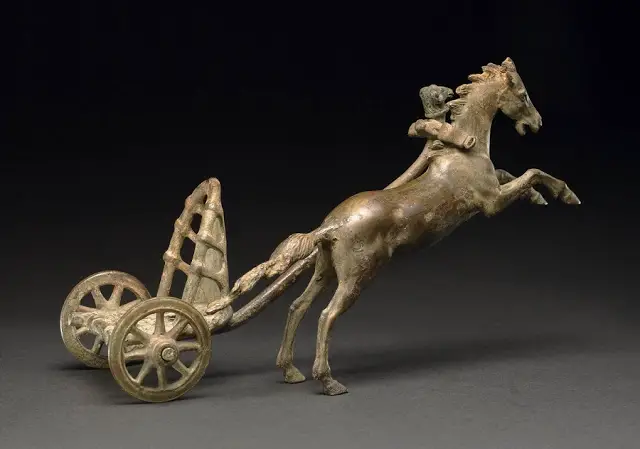Scientists now know what kept ancient Roman chariots from crashing, and it's thanks to a toy.
 The British Museum displays a two-wheeled toy chariot model, found in the Tiber River in the late 19th Century. The toy has a horse and a chariot but no person aboard the chariot.
The British Museum displays a two-wheeled toy chariot model, found in the Tiber River in the late 19th Century. The toy has a horse and a chariot but no person aboard the chariot.
According to University of Wisconsin at Madison's Bela Sandor, an emeritus professor of engineering physics, the secret was an iron rim mounted on the right wheel of the otherwise wooden chariot, which was held together with rawhide strips and glue made from animal hides.
The toy actually represents a two-wheeled racing chariot called a biga. The human driver and the other horse did not survive through the years. Also not surviving through the years were any real chariots, so scientists have had to make do with miniatures like the British Museum's toy.
Chariot races were run counter-clockwise, so the right side of the chariot would been on the inside of the race track. Having an iron rim on that side of the chariot would have helped stabilise the chariot at high speeds, helping keep the chariot from tipping over; and in some chariot races, the chariot that didn't tip over was the one that won the race.
The information is part of a writeup of a study, published in the Journal of Roman Archaeology.